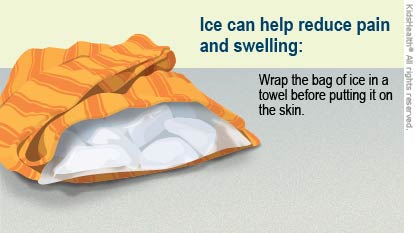A sprain happens when a ligament stretches or tears. Ligaments are stretchy bands that connect bones to each other. A sprain can take a few days, weeks, or longer to feel better. Follow these instructions to help your child as the sprain heals.




How do health care providers diagnose sprains? Health care providers ask questions and examine the injury. X-rays are sometimes needed to make sure there is no broken bone.
How can sprains be prevented? If your child plays sports, wearing proper safety gear and shoes that fit well can help prevent some sprains.